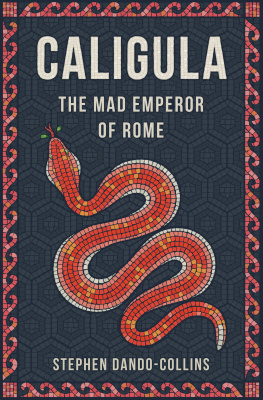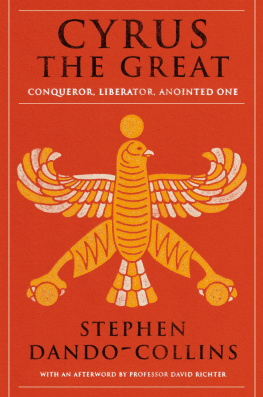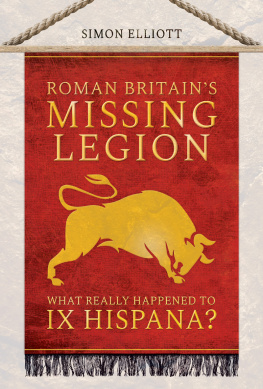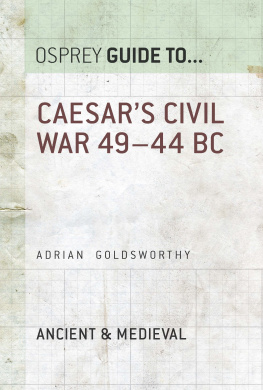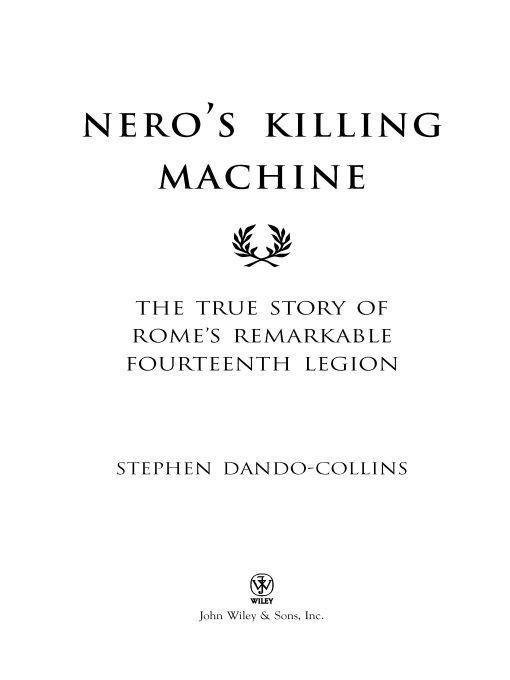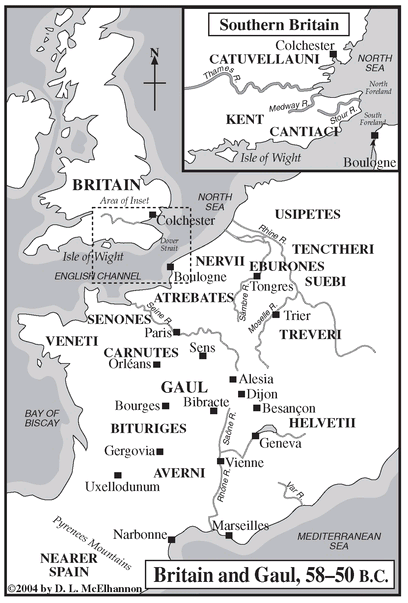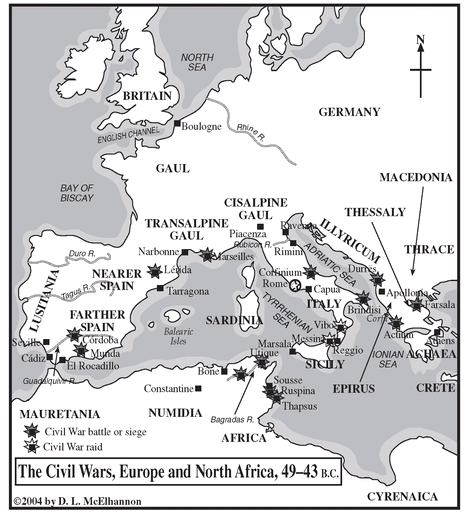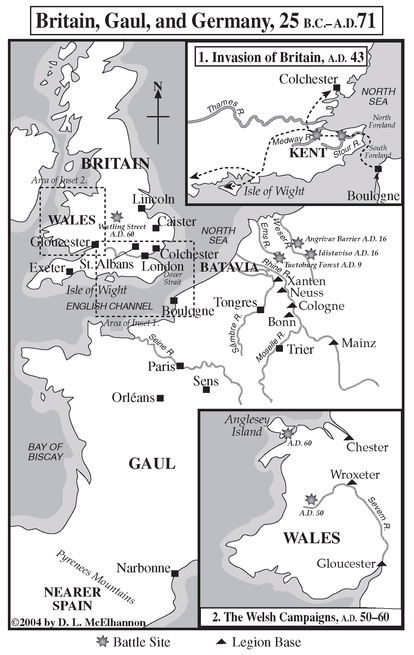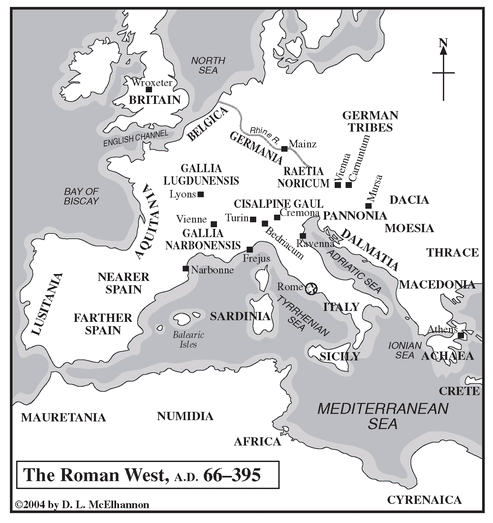Table of Contents
Copyright 2005 by Stephen Dando-Collins. All rights reserved
Maps 2005 by D. L. McElhannon.
Published by John Wiley & Sons, Inc., Hoboken, New Jersey
Published simultaneously in Canada
No part of this publication may be reproduced, stored in a retrieval system, or transmitted in any form or by any means, electronic, mechanical, photocopying, recording, scanning, or otherwise, except as permitted under Section 107 or 108 of the 1976 United States Copyright Act, without either the prior written permission of the Publisher, or authorization through payment of the appropriate per-copy fee to the Copyright Clearance Center, 222 Rosewood Drive, Danvers, MA 01923, (978) 750-8400, fax (978) 646-8600, or on the web at www.copyright.com. Requests to the Publisher for permission should be addressed to the Permissions Department, John Wiley & Sons, Inc., 111 River Street, Hoboken, NJ 07030, (201) 748-6011, fax (201) 748-6008.
Limit of Liability/Disclaimer of Warranty: While the publisher and the author have used their best efforts in preparing this book, they make no representations or warranties with respect to the accuracy or completeness of the contents of this book and specifically disclaim any implied warranties of merchantability or fitness for a particular purpose. No warranty may be created or extended by sales representatives or written sales materials. The advice and strategies contained herein may not be suitable for your situation. You should consult with a professional where appropriate. Neither the publisher nor the author shall be liable for any loss of profit or any other commercial damages, including but not limited to special, incidental, consequential, or other damages.
For general information about our other products and services, please contact our Customer Care Department within the United States at (800) 762-2974, outside the United States at (317) 572-3993 or fax (317) 572-4002.
Wiley also publishes its books in a variety of electronic formats. Some content that appears in print may not be available in electronic books. For more information about Wiley products, visit our web site at www.wiley.com.
Library of Congress Cataloging-in- Publication Data:
Dando-Collins, Stephen, date.
Neros killing machine: the true story of Romes remarkable Fourteenth Legion / Stephen Dando-Collins.
p. cm.
Includes bibliographical references and index.
ISBN 0-471-67501-6 (cloth)
1. Rome. Legion XIV Gemina Martia VictrixHistory. I. Title.
U35.D3724 2004
355.00937dc22
2004001728
ATLAS
1. Britain and Gaul, 58-50 B.C.
2. The Civil Wars, Europe and North Africa, 49-43 B.C.
3. The Eastern Mediterranean, 42-30 B.C.
4. Britain, Gaul, and Germany, 25 B.C.-A.D. 71
5. The Roman West, A.D. 66-395
ACKNOWLEDGMENTS
This book would not have been possible without the immense help provided over many years by countless staff at libraries, museums, and historic sites throughout the world. To them all, my heartfelt thanks. Neither they nor I knew at the time what my labor of love would develop into. My thanks, too, to those who have read my research material as it blossomed into manuscript form and made invaluable suggestions.
I wish to record my gratitude to several people in particular. First, to T. R. Fehrenbach, for his support of this project when it was taking shape and for his generous words about the first book in the series. Thanks, too, to Stephen S. Power, senior editor with John Wiley & Sons, for his continued enthusiasm, support, and guidance and senior production editor John Simko. Then there is the wise one, Richard Curtis, my champion of a New York literary agent, who has gone into battle for me time and again.
And my remarkable wife, Louise, my muse, my shield, my countess. We are now into our third decade together, and never once in all this time has her faith in me, my writing, or my aspirations slipped. She has guided, goaded, and guarded me all through this time, and never let me lose sight of the goal. As Seneca said of his wife, Paulina, Can anything be sweeter than to find that you are so dear to your wife that this makes you dearer to yourself?
AUTHORS NOTE
This is the second book in this series of histories of legions of ancient Rome, the result of thirty-two years of research and writing. Prior to the 2002 publication of the first book in the series, Caesars Legion, the story of the 10th Legion, never before had a comprehensive history of an individual Roman legion been published. In the process of those decades of detective work it was possible to identify the Augustan and post-Augustan legions raised between 84 B.C. and A.D. 231 and to compile detailed histories of many of them.
The works of numerous classical writers who documented the wars, campaigns, battles, skirmishes, and most importantly the men of the legions of Rome have come down to us. Authors such as Julius Caesar, Appian, Plutarch, Tacitus, Suetonius, Polybius, Cassius Dio, Josephus, Cicero, Pliny the Younger, Seneca, Livy, Arrian. Without their labors this book would not have been possible.
During the research for this series, light was shed for the first time on a number of issues relating to the legions, the most important of which was the reenlistment factor. The legions of Rome were recruited en masse, and the survivors discharged en masse at the end of their enlistmentoriginally after sixteen years, later, after twenty. Only on exceptional occasions, such as one described in this book, were replacements supplied to a legion before its new enlistment was due, to make up for battle casualties. By using the reenlistment factor it was possible to determine the exact years in which every legion and the Praetorian Guard underwent their discharges and reenlistments. This helps explain why particular units were crushed in this battle or that. In some, they were raw recruits; in others, they were weary men about to go into retirement after twenty years in uniform.
All speeches and conversations in this book are taken from dialogue and narrative in classical texts, and are faithful to those original sources. The exchanges at the officers conference at Atuatuca in 54 B.C., for example, are as Caesar recorded them in his memoirs. Likewise, the prebattle speeches of Boudicca, General Paulinus, Civilis, and General Cerialis are just as Roman historians Tacitus and Dio wrote them.


